#MTP Trunk Cable
Explore tagged Tumblr posts
Text
Power of MPO Cable Applications in Modern Connectivity
Fiber optic connections having many fibers contained in a single connector are known as MPO trunk cable. These connectors are a great option for applications that need high-density communication since they can hold anywhere from 8 to 144 fibers. MPO connections’ design makes installation quick and simple, reducing downtime and promoting effective data transfer. Due to its ability to meet the…

View On WordPress
1 note
·
View note
Text
Control Signal Strength with SC Attenuators
The SC attenuator regulate optical signal power, preventing overload and ensuring optimal network performance. They are essential for fine-tuning signal levels in fiber optic systems. Fiber-MART provides precision-engineered SC attenuators for smooth and consistent data transmission.

#fiber amplifier#sfp+ cable#qsfp28#QSFP+#fiber trunk cable#optical isolator#SC Attenuator#12 LC cable#MPO to MPO#MTP to MTP
0 notes
Text

Fiber-Life shares MTP Trunk Cables And MTP Breakout
In high-density network environments such as data centers, MTP trunk cables and MTP breakout cables are two essential types of fiber optic cables.
0 notes
Text
FAN OUT CABLES
Understanding Fan-Out Cables: The Essential Connection for Fiber Optic Networks
In the world of fiber optics, ensuring that signals are transmitted efficiently across multiple channels is crucial for modern communication systems. One of the key components used to achieve this is fan-out cables. These specialized cables play an important role in splitting and distributing signals across various endpoints in fiber optic networks. Whether you're setting up a data center, upgrading your broadband infrastructure, or managing a complex telecommunications system, understanding fan-out cables and their uses can help you make the right decisions for your network.
In this blog, we’ll dive into what fan-out cables are, how they work, and why they’re an essential component in fiber optic communication systems.
What is a Fan-Out Cable?
A fan-out cable is a type of fiber optic cable that takes a single high-count fiber optic cable and separates it into multiple individual fibers. Essentially, it “fans out” the individual fibers from a single cable, allowing you to connect multiple devices or endpoints to a single trunk line. This type of cable is designed to help organize and manage fiber connections in complex setups where a single cable needs to be distributed to multiple locations.
Fan-out cables are often used in fiber optic patch panels, distribution frames, or splicing systems, helping reduce clutter, improve organization, and ensure smooth data transmission.
How Do Fan-Out Cables Work?
A typical fiber optic system involves a trunk cable (which can contain many fibers) that runs from a central location (like a switch or a server room) to various endpoints. However, each endpoint needs to be individually connected to the network, which is where fan-out cables come in.
A fan-out cable consists of a buffer tube that holds multiple fibers inside. The cable splits the fibers at the termination point, often converting a high-fiber count (like 12, 24, or more) into individual fibers for easier patching and connection.
Here's how they typically work:
Trunk Cable: A high-count fiber optic cable (like a 12-fiber or 24-fiber cable) comes into the fan-out cable.
Buffer Tubes: The individual fibers inside the trunk cable are grouped together in buffer tubes, which help protect the fibers.
Fan-Out: The cable splits, with each individual fiber being separated out for easier termination, allowing technicians to connect them to patch panels or other equipment as needed.
This “fan-out” effect helps maintain a clean and organized setup while also allowing flexibility in fiber network management.
Types of Fan-Out Cables
There are two primary types of fan-out cables based on their configuration and application:
Standard Fan-Out Cable:
This is a typical fan-out cable used to separate a high-count fiber optic cable into multiple individual fibers. Standard fan-out cables are used in patch panels, distribution frames, and other equipment where individual fibers need to be connected to specific locations.
Breakout Fan-Out Cable:
Breakout fan-out cables have individual fibers that are terminated with connectors (like LC, SC, or MTP connectors). These are often used when a single fiber needs to be quickly connected to network devices like routers, switches, or patch panels without the need for further splicing.
Breakout cables are typically used when you need to connect individual fibers directly to active network equipment, whereas standard fan-out cables are often used in environments where fiber terminations and connections need to be centralized and managed.
Key Benefits of Fan-Out Cables
Fan-out cables are designed to improve the efficiency and organization of fiber optic networks. Here are some of the main benefits of using fan-out cables:
1. Organization and Cleanliness
One of the biggest advantages of fan-out cables is their ability to help maintain a clean and organized network setup. In high-density fiber optic systems, managing large bundles of cables can become a mess without the proper tools. Fan-out cables split a high-count fiber bundle into smaller, more manageable units, allowing for easier identification and termination.
2. Simplified Network Management
By breaking out individual fibers, fan-out cables allow network technicians to easily manage, terminate, and test each fiber separately. This makes maintenance and troubleshooting much more straightforward and allows for a more flexible network infrastructure.
3. Flexible Connections
Fan-out cables provide flexibility in your fiber optic network, allowing multiple devices to connect to a single high-count fiber trunk. Whether you need to connect a few devices or many, fan-out cables make it easier to route signals and ensure high performance across the network.
4. Cost-Effective
While the initial investment in fiber optics can be expensive, fan-out cables help reduce the cost of upgrades and expansions. By allowing a single trunk cable to be split into multiple fibers, you can increase the capacity of your existing fiber optic infrastructure without needing to install new cables for each connection point.
5. Easy to Terminate
Fan-out cables make it much easier to terminate fiber optic connections. Technicians can focus on individual fibers rather than having to deal with a high-count trunk cable, leading to fewer mistakes during installation and faster setup times.
6. Reduced Signal Loss
By keeping the fibers in a manageable and well-organized system, fan-out cables help minimize the risks of signal degradation due to bending, kinks, or poor cable management. Good fiber cable management can maintain the integrity of the signal, ensuring the best possible network performance.
Applications of Fan-Out Cables
Fan-out cables are commonly used in various sectors that rely on fiber optic networks. Some key applications include:
Data Centers
Fan-out cables are used in data centers where large amounts of data need to be transmitted quickly and reliably. These cables help organize fiber connections and improve the efficiency of patching and reconfiguring fiber networks.
Telecommunications
In telecommunications networks, fan-out cables enable the distribution of fiber signals across different locations, ensuring reliable service to both residential and business customers.
Fiber-to-the-Home (FTTH)
FTTH networks use fan-out cables to distribute fiber optic signals from a central node to homes and businesses, providing high-speed internet, television, and phone services.
Campus Networks
Universities, hospitals, and corporate campuses often use fan-out cables to distribute fiber optic connections to multiple buildings or floors, creating a robust and scalable network.
Long-Distance Fiber Optic Networks
Fan-out cables are also employed in long-distance transmission systems, where a single trunk fiber optic cable needs to branch out into multiple separate fibers at various endpoints, such as relay stations or regional hubs.
Conclusion
Fan-out cables are an essential part of modern fiber optic networks, allowing for efficient and flexible distribution of high-bandwidth data across multiple endpoints. Whether you're building a data center, connecting remote locations, or upgrading your telecommunications infrastructure, fan-out cables provide a simple solution for improving cable management, maintaining high signal quality, and simplifying network expansion.
With the growing demand for high-speed internet and data transmission, fan-out cables are more important than ever in ensuring the smooth operation of fiber optic networks. By understanding their role and benefits, you can make better-informed decisions for your network setup, leading to improved performance and long-term scalability.
0 notes
Text
MTP Trunk Cable: The Backbone of High-Density Fiber Connectivity
In the ever-evolving landscape of communication networks, the MTP Trunk Cable has emerged as a cornerstone for high-density fiber connectivity. This innovative product, renowned for its efficiency and versatility, has revolutionized the way we design and deploy fiber optic infrastructures. With its ability to seamlessly integrate into modern data centers and telecommunications systems, the MTP…
0 notes
Video
youtube
✨24Fiber OM3 MTP/MPO Fiber Optic Trunk Cable
0 notes
Text
https://www.china-tscom.com/products/mpo-shuffle-cable/
Like MTP®/MPO cable, MTP®/MPO Shuffle cable is also used for connecting MTP® modules together as a permanent link, and it also be used with plug-and-play modules or MTP®/MPO connector panels to achieve multi-level connection of the extension of the pre-terminated trunk cable by MTP®/MPO panel. Normally, the shuffle cables are used to interconnect cassettes, panels, or ruggedized MTP®/MPO fanouts, spanning MDA, HDA, and EDA zones. The difference is that its optical fiber routing is formulated according to the requirements of the optical connection at the construction site, which can realize special optical fiber routing different from the conventional polarity, reducing network installation or reconfiguration time and cost.
Features of MTP®/MPO Cable Shuffle
Low loss performance
Up to 288 fibers – ideal for high-density applications
Available in OS1, OS2, G.657A2, OM3, OM4 Fiber Grades – OM1 and OM2 available upon request
Option for LSZH, OFNP or OFNR cable jacket
100% factory terminated and tested
Pulling eyes are provided as an option to protect the fiber ends during installation
Save installation and reconfiguration time
Applications of MTP®/MPO Shuffle Cable
Data Centers
40/100G applications
Storage area network- fiber channel
Parallel optics
InfiniBand
The internal connector application in fiber equipment
Standards Compliance of MTP®/MPO Shuffle Cable
TIA/EIA-568.3-D and ISO/IEC 11801
IEC-61754-7 & EIA/TIA-604-5&GR-1435-CORE
NFPA 262 or IEC 60332
Compliant to Directive 2002/95/EC (RoHS) and REACH SvHC
EN 50575
InfiniBand Compliant
Specifications of MTP®/MPO Shuffle Cable
General Specification
Technical Specification
Construction
Description
Fiber Count
12-288 Fibers
Fiber Mode
Single mode: OS2/G657 9/125um Multimode: OM4 50/125um, OM3 50/125um
Fiber Brand
SMF-28® Ultra optical fiber
Corning ClearCurve® multimode fiber
Cable Jacket Ratings
Riser (OFNR)
Plenum (OFNP) Low Smoke Zero Halogen (LSZH)
Cable Jacket Color
OS2/G657: Yellow OM3: Aqua; OM4: Aqua/Magenta or Customized
Polarity
Customized
Connector Ferrule
12F/16F/ 24F/32F/48F
Connector Ferrule Brand
US Conec, HANKUSAN, Nissin
Connector Type
MTP Female, Male; MPO Female, Male
Connector Brand
US Conec MTP, Senko MPO, Nissin MPO, Sanwa MPO, FURUKAWA MPO
Connector Color
Ferrule
SM(APC)
SM(PC)
OM3
OM4
or
Customized
Low loss
Yellow
Yellow
Aqua
Magenta
Standard
Green
Blue
Aqua
Magenta
Connector Boot Color
Green/Black/ or Customized
Pulling eye
Customized
Operating Temperature
-20°C to +70°C
Storage Temperature
-40°C to +85°C

0 notes
Text
In order to meet the requirements of using myriad fibers simultaneously and save much space in high-density network environment, fiber optic cables evolved gradually into MTP/MPO cable from LC cable, MTRJ cable, LSH cable and MU cable. Besides, MTP/MPO fiber optic cables have developed as an optimum solution for fiber migration to 40G and 100G. This article will keep you informed of the main points of MTP/MPO optical cables.
What Is MTP/MPO Fiber Optic Cable
Like the configuration of other fiber optic cables, MTP/MPO optical cables are also composed of connectors and fiber optic cable. As is shown below, a MTP/MPO fiber optic cable enables the synchronous use of 8 fibers, 12 fibers, 24 fibers and even 144 fibers, among which 8 fibers is the most common one. However, the traditional optical cable can only contain one or two fibers in every single fiber cable. What distinguishes MTP/MPO optical cables from other fiber optic cables lies in its special connector which will be explained in the following part.

MTP/MPO Optical Cable
Traditional Optical Cable
MTP/MPO Connector
MTP is a registered trademark of US Conec, which is an improved version of MPO. MTP/MPO connectors are divided into male version (with pins) and female version (without pins). The pins align the fronts of the connectors, and also the head faces of the fibers to mate two MTP/MPO connectors. The key ensures an adapter hold the connector with the correct ends aligned with each other. “Key up”means the key is up on one side and down on the other while “key down” is just the opposite. The picture below will give you a direct-viewing experience.

Apart from what is mentioned above, there are three types of MTP/MPO connector strands: 8 strands, 12 strands and 24 strands, among which 12 strands is more commonly-used. Different strands and key directions are relevant to the polarity of MTP/MPO optical cables, including type A, type B and type C.

Types of MTP/MPO Fiber Optic Cable
According to specific application, MTP/MPO cable can be divided into trunk cable (without branches) and harness cable (with branches).
MTP/MPO Trunk Cable
MTP/MPO trunk cable is a cable with two MPO or MTP connectors at both ends, serving as a permanent link to connect modules together. MTP/MPO trunk cables are available with 12, 24, 48 and 72 fibers, with a number of advantages, such as higher quality, minimal skew, shorter installation time, smaller volume of cable, lower cost, etc. MTP/MPO trunk cable is widely-used in data center, infrastructures and backbone applications where cable distances are reasonably predictable and easily determined.

OM3 Single Mode Optical Cable OM4
MTP/MPO Harness Cable
MTP/MPO harness cable, also known as MTP/MPO breakout cable or fan-out cable, is a fiber optic cable terminated with an MTP/MPO connector on one end and discrete LC/SC/FC/MTRJ (generally MTP to LC) connectors on the other end. MTP/MPO harness cable is usually applied in 40G to 10G transmission and 100G to 25G transmission and used to connect devices within one rack for short distances links.

OM3 Single Mode Optical Cable OM4
Conclusion
In this day and age, there is an increasing requirement for networking, which will become an exploding demand with the advent of 5G era. Apparently, the traditional fiber optic cables can hardly satisfy the high requirements. In contrast, MTP/MPO optical cables are much better. And many companies have been improving their MTP/MPO optical cables to cater to users. For example, FS.COM has developed MTP conversion cables and also provided customized MTP/MPO fiber cables to meet various users’ particular requirements.
0 notes
Text
MTP/MPO Fiber Optic Cable: Types and Their Applications
With ever-greater bandwidths and network connections to deal with in data centers, traditional duplex fiber patch cords like LC fiber patch cords no longer meet the demands. To solve this issue, MTP/MPO fiber optic cable that houses more fibers in a multi-fiber MTP/MPO connector was introduced in the market as a practical solution for 40G/100G/400G high-density cabling in data centers. This article will introduce different MTP/MPO cable types and their applications.
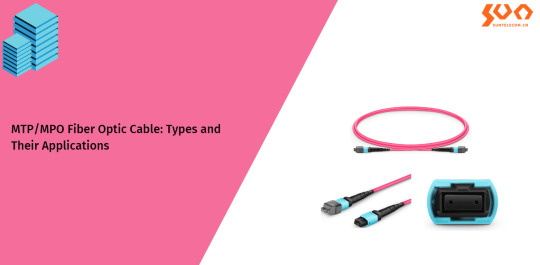
What is MTP/MPO Cable?
MPO (multi-fiber push-on) is the first generation of clip-clamping multi-core fiber optic connectors. MTP is an advanced version of MPO with the better mechanical and optical performance. They look similar and are fully compatible and interchangeable.

MTP/MPO cable consists of MTP/MPO connector and optical fiber. MTP/MPO connector has a female type (without pins) or a male type (with pins). MTP/MPO connector increases the fiber optic cable density and saves circuit card and rack space, which is well suited for current data center cabling and future network speed upgrades.
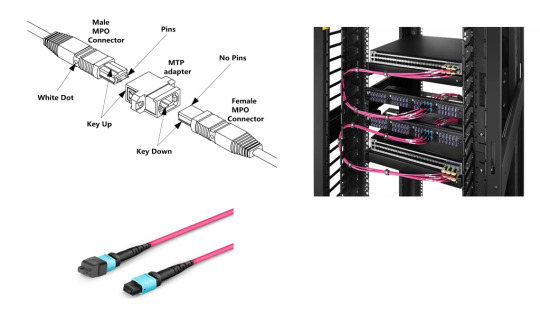
MTP/MPO Cable Types
MTP/MPO cable types are classified based on function, polarity, fiber count, fiber mode, and jacket rating.
By Function
Based on function, MPO/MTP cable type is divided into MTP/MPO trunk cable, MTP/MPO breakout cable, and MTP/MPO conversion cable.
MTP/MPO Trunk Cable
MTP/MPO trunk cable is terminated with an MTP/MPO connector (female/male) on both ends, which is available in 8-144 fiber counts for users’ choices. Typically, MTP/MPO trunk cable is ideal for creating a structured cabling system, including backbone and horizontal interconnections such as 40G-40G and 100G-100G direct connections.

2.MTP/MPO Breakout Cable
MTP/MPO breakout cable (aka. harness cable or fanout cable) is terminated with a female/male MTP/MPO connector on one end and 4/6/8/12 duplex LC/FC/SC/ST connectors on the other end, such as 8-fiber MTP/MPO to 4 LC harness cables and 12-fiber MTP/MPO to 6 LC harness cables. Typically, MTP/MPO breakout cable is ideal for short-range 10G-40G and 25G-100G direct connections or for connecting backbone assemblies to a rack system in the high-density backbone cabling.

3.MTP/MPO Conversion Cable
MTP/MPO conversion cable has the same fanout design as MTP/MPO breakout cable but is different in fiber counts and types. MTP/MPO conversion cable is terminated with MTP/MPO connectors on both ends. MTP/MPO conversion cable is available in 24-fiber to 2×12-fiber, 24-fiber to 3×8-fiber, and 2×12-fiber to 3×8-fiber types, and is ideal for 10G-40G, 40G-40G, 40G-100G, and 40G-120G connections, which eliminate fiber wasting and largely increase the flexibility of the MTP/MPO cabling system.
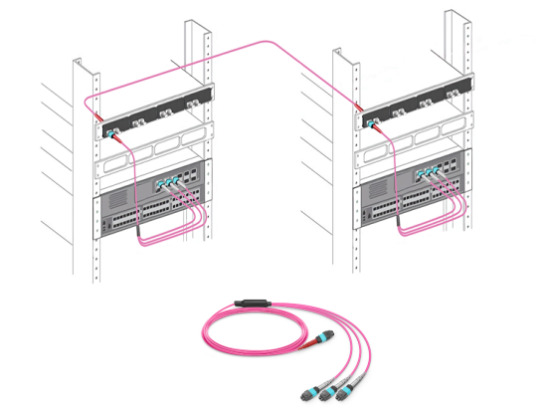
By Polarity
Polarity refers to the difference between the optical transmitters and receivers at both ends of the fiber link. Due to the special design of MTP/MPO connectors, polarity issues must be addressed in high-density MTP/MPO cabling systems. To guarantee the correct polarity of the optical path, the TIA 568 standard defines three connection methods, called Type A, Type B, and Type C. The cables of the three MTP/MPO connector types have different structures.
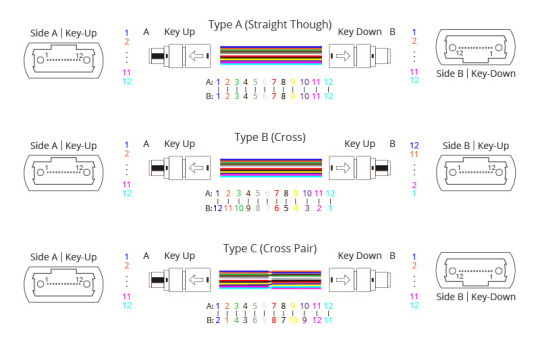
By Fiber Count
Based on fiber count, MTP/MPO cable type is divided into 8/12/16/24 fiber. The 8-fiber MTP/MPO cable can transmit the same data rate as 12-fiber, but with lower cost and insertion loss, making it a more cost-effective solution. 12-fiber MTP/MPO cable is the earliest developed and most commonly used solution in 10G-40G and 40G-100G connections. If it is used in 40G QSFP+ or 100G QSFP28 transceivers, 4 fibers will be idle, resulting in low fiber utilization.16-fiber MTP/MPO is designed for 800G QSFP-DD/OSFP DR8 and 800G OSFP XDR8 optics direct connection and supporting 800G transmission for hyperscale data center. 24-fiber fiber MTP/MPO cable is used to establish a 100GBASE-SR10 connection or 400G connection between CFP and CFP transceivers.

By Fiber Mode
Based on fiber mode, MTP/MPO cable includes single-mode (SM) and multi-mode (MM). SM MTP/MPO cable is suitable for long-distance transmissions, such as in metropolitan area networks (MANs) and passive optical networks PONs (PONs), with less modal dispersion, and it is available in OS2 type. While MM MTP/MPO cable is suitable for short-distance transmission, allowing 40 Git/s maximum transmission distance of 100m or 150m, and it is available in OM3/OM4 types.

By Jacket Rating
According to different fire rating requirements, the jackets of MTP/MPO cable types are divided into low smoke zero halogen (LSZH), optical fiber non-conductive plenum (OFNP), communications multipurpose cable plenum (CMP), etc. LSZH MTP/MPO cable is free of halogenated materials (toxic and corrosive during combustion), provides better protection for personnel and equipment in a fire, and is suitable for closed places. OFNP MTP/MPO cable contains no electrically conductive elements and is designed with the highest fire rating, which can be installed in ducts, plenums, and other spaces for building airflow. CMP MTP/MPO cable can restrict flame propagation and smoke exhaust rate during a fire, which is suitable for plenum spaces, where air circulation for heating and air conditioning systems are facilitated.
Conclusion
MTP/MPO cables provide stable transmission, high performance, high-density cabling for various environments, and prevent network bottlenecks, reduce network latency, and expand bandwidth and scalability for future network expansion. Sun Telecom provides total and customized solutions of fiber optic products to the global market. Contact us if you have any needs.
2 notes
·
View notes
Text
Long-Distance Telecommunications Networks Use Fiber Trunk Cables
Fiber trunk cable uses the concepts of total internal reflection instead of standard copper wires to transfer data as light pulses. These minuscule glass or plastic strands have low electromagnetic interference and can transmit signals over long distances with little signal loss. Because fiber optics employ light pulses to carry data at much greater speeds, they are the foundation of…

View On WordPress
1 note
·
View note
Text
Unlock High-Speed Connectivity with QSFP+ Modules
In contemporary networks, QSFP+ (Quad Small Form-factor Pluggable Plus) modules are essential for attaining high-bandwidth data transfer. They are perfect for enterprise and data centre applications, supporting up to 40Gbps of data. QSFP+ modules from Fiber-MART offer reliable and seamless network performance.

#fiber amplifier#sfp+ cable#qsfp28#QSFP+#fiber trunk cable#optical isolator#SC Attenuator#12 LC cable#MPO to MPO#MTP to MTP
0 notes
Photo

Enconnex 40G MTP (Female) to MTP (Female) - Trunk Cable - 7 Meter - itgears.co.in
Buy Enconnex 40G MTP (Female) to MTP (Female) - Trunk Cable 7 meter with speed 40Gig. Different colors & lengths are available. Buy power cords online at best prices on itgears.co.in
Figure: http://www.itgears.co.in/networking/connectivity/enconnex-40g-mtp-female-to-mtp-female-trunk-cable-7-meter.html
0 notes
Text
MPO Trunk Cables: The Ultimate Guide to High-Density Fiber Connectivity
As the world generates and consumes more data than ever before, the need for reliable and efficient high-speed data transmission has become paramount. As data demands continue to grow, traditional fiber optic cabling solutions have reached their limits. MTP/MPO trunk cables represent the next generation of high-density connectivity, offering a significant leap forward in performance and…

View On WordPress
0 notes
Text
MTP Specifications and Deployment for 40GBASE-PLRL4 QSFP+
Commonly, QSFP+ transceiver designed with LC interface works with single-mode fiber for long distance application, while QSFP+ transceiver with MTP/MPO interface is used over multimode fiber for short distance transmission. For instance, 40GBASE-ER4 QSFP+ is designed with LC duplex interface, and it supports maximum transmission length of 40 km over single-mode LC duplex fiber; 40GBASE-SR4 QSFP+ with MTP/MPO interface supports a transmission distance no more than 150m over multimode fiber. However, in order to meet user’s diverse needs in real applications, some 40G transceivers are designed not following this rule, like 40GBASE-PLRL4 (parallel LR4 Lite). This transceiver is with MTP/MPO interface design but is used over single-mode fiber for long distance transmission. This article will introduce the MTP/MPO specifications for this transceiver and its deployment cases.

MTP Specifications for 40GBASE-PLRL4 QSFP+
QSFP-40G-PLRL4 transceiver uses MTP-12 interface to achieve parallel transmission, supporting maximum data links up to 1.4 km. The cable type required for 40GBASE-PLRL4 is an APC (angle polished connector) single-mode MTP-12 cable. The cable is similar to the 40G-SR MTP or MPO, with the only change being the use of single-mode fiber. UPC (ultra polished connector) is another type of connector for MTP-12 cables, but it is not suited for single-mode fiber in market. APC is the only available type for single-mode MTP-12 fiber. The MTP-12 connector plugged into the QSFP-40G-PLRL4 transceiver carries the 40G signal over only 8 of the 12 fibers, remaining four fibers unused, and these four can optionally be not presented in the cable for economic reason. The used 8 fibers are mapped as 4x10G Tx and Rx pairs. In addition, the MTP cables connected to QSFP-40G-PLRL4 transceiver can be either MTP trunk cables or MTP splitter cables.
Deployment of 40GBASE-PLRL4 QSFP+
The QSFP-40G-PLRL4 is optimized to guarantee interoperability with any IEEE 40GBASE-LR4 and 10GBASE-LR. So when the link for 40G network and 10G to 40G migration is less than 1.4 km, it will be very appropriate to use 40GBASE-PLRL4 QSFP+ transceiver with single-mode MTP cables.
In the first case, you can choose a MTP trunk cable together with the 40GBASE-PLRL4 QSFP+ module for direct 40G connection. The following picture shows two 40GBASE-PLRL4 QSFP+ transceivers connected by a single-mode 12-fiber MTP trunk cable.

In the second case, you can simply use an 8-fiber MTP to 4xLC duplex harness cablewith one 40GBASE-PLRL4 QSFP+ and four 10GBASE-LR SFP+ to achieve 10G to 40G.

You can see in the above two cases, MTP cable plays an important role and due to the special requirements of 40GBASE-PLRL4 for single-mode MTP APC fiber, it is necessary to choose the right MTP products connected to this 40G QSFP+.
Conclusion
40GBASE-PLRL4 QSFP+ module has special interface design which can be only compatible with single-mode MTP connector. During the deployment of 40GBASE-PLRL4 QSFP+ module, selecting proper MTP assemblies are essential to successfully accomplish the link. FS.COM is a professional fiber optic transceiver vendor and MTP product manufacturer, supplying compatible 40GBASE-PLRL4 QSFP+ transceiver of different brands, such as Cisco, Arista, Brocade, Huawei, etc. Also other customized compatible brands are available for your requirements. MTP cables and assemblies are available for same-day shipping at low prices. You will be surprised to see how many kinds of network devices FS.COM can offer and you will get more than cost-effective products but also impressive service.
Originally posted on: https://goo.gl/70Q5fl
#10GBASE-LR#40GBASE-PLRL4#MTP adapter panel#MTP harness cable#MTP Trunk Cable#QSFP-40G-PLRL4#SFP-10G-LR
0 notes
Text
QSFP-40G-SR4 VS. QSFP-40G-UNIV
Due to the ever-increasing requirement for higher speed transmission, 40G Ethernet is introduced to networking world, and it will gradually dominates the market. Many vendors have released different kinds of devices to support 40GbE, among which 40G QSFP+ module is the most popular and available for short distance or long distance data transmission. There are two variants short distance QSFP+ modules: QSFP-40G-SR4, and QSFP-40G-UNIV, what are the differences among these two types? This passage will tell you and give more information.
Differences in Interfaces and Transmission Media
Commonly, for QSFP+ modules, there are mainly two connector interfaces: MPO/MTP and duplex LC(Note: LC interfaced QSFP+ uses serial transmission, while MPO/MTP interfaced QSFP+ uses parallel transmission. In serial transmission, bits are sent simultaneously on different channels within the same cable, and in parallel transmission, bits are sent sequentially on the same channel). QSFP-40G-SR4 uses MPO/MTP to achieve data transmission over multimode fiber. However, in order to avoid wasting cost and deployment time when installing in different cabling structure, duplex LC interfaced QSFP-40G-UNIV is designed to be used in both single-mode and multimode links without adding any hardware or software.
Differences in Working Principle
For MPO/MTP interfaced 40GBase-SR4, it offers 4 independent full-duplex transmit and receive channels, each capable of running up to 10G data rates per channel, achieving the total 40G data rates. These modules are often used with 12-fiber MTP trunk cable, four transmitting and four receiving, leaving the middle four unused. For duplex LC interfaced 40GBase-UNIV, it also uses four transmitters and four receivers but has built in optical multiplexing and de-multiplexing, which results in a duplex connector and hence operates over the same duplex fiber infrastructure as 10GBASE-SR.
Differences in Transmission Distance
40GBase-SR4 module can support link lengths of 100 meters and 150 meters, respectively, on laser-optimized mutimode fibers, and it can also be used in a 4x10G mode interoperability with 10GBase-SR interfaces up to 100 and 150 meters on OM3 and OM4 fibers, respectively. 40GBase-UNIV can support the same transmission distance over OM3 and OM4 fibers, but it can also achieve link lengths of up to 500 meters over single-mode fiber.
Differences in Cost Consumption
40GBase-UNIV is much more expensive than 40GBase-SR4. Take FS.COM for example, 40GBase-UNIV is $340, while 40GBase-SR4 is $55. Besides the price of the unit itself, we should also take the whole deployment cost consumption into consideration. Migrating from 10G to 40G is inevitable. The existing 10G network uses two fibers for dual transmission. But most 40G network uses 12-fiber MTP based fiber optic cable for dual-way transmission over multimode fibers, which means if we use 40GBase-SR4 with MTP port for 10G to 40G migration, more optical fibers will be added and the cabling infrastructure will be changed. However, with 40GBase-UNIV module, it can support the same or longer transmission distance as the 40GBase-SR4 does, but it uses two strands of dual-way transmission like most 10G network, which will keep the existing 10G network when upgrade to 40G, greatly saving cost and time.
Conclusion
We have introduced QSFP-40G-SR4 and QSFP-40G-UNIV modules for short distances transmission. These two module types have different features. Choosing which one totally depends on your practical applications and budgets. FS.COM has plenty of QSFP-40G-SR4 and QSFP-40G-UNIV optics in stock. For more information, please check FS.COM.
Originally published at http://www.fiber-optic-cable-sale.com/qsfp-40g-sr4-vs-qsfp-40g-univ.html
0 notes
Text
https://www.china-tscom.com/products/mpo-mtp-cable-assembly/
MTP/MPO cable assembly use MPO or MTP® multi-fiber connectors. MTP®/MPO Fiber Patch Cord greatly saves space and is very convenient to use. Based on single ferrule MT technology, the MPO Fiber Patch Cord assemblies provide up to 72 fiber connections in a single point, reducing the physical space and labor requirement, while providing the same bandwidth capacity of a multi-fiber cable with individual fiber connector terminations per cable.
Typically with MT series like MTP®/MPO fiber connectors, these MTP®/MPO Patch Cord features multi-fiber connections in the same single-core fiber optic patch cord. Except for Standard MTP/MPO cable assemblies including MTP®/MTP® harness cable, shuffle cable, hydra cable and trunk cable, we also provide other types like IP68 MTP®/MPO fiber cable, MTP®/MPO loopback adapter and so on for different applications
MTP® MPO Fiber Cable Assembly Types
T & S MTP® / MPO cable assemblies meet the requirements of IEC61754, IEC61755, TIA568, GR1435 and other standards, and adopts a push-pull locking structure with male and female heads to ensure butt tightness and low loss. Single head loss of SM product: conventional product IL ≤ 0.75db, RL ≥ 60dB; elite product IL ≤ 0.35db, RL ≥ 60dB. Single head loss of MM product: conventional product IL ≤ 0.60db, RL ≥ 20dB; elite product IL ≤ 0.35db, RL ≥ 20dB. The optical fiber channel is used for termination and supports high bandwidth applications. It is specially designed to save cable management time and high-density fiber distribution area. The outer diameter of the optical cable can match the pre-termination of Ø 2.0 ~ 5.5mm, and the spring elasticity of 9.8N and 20n can be matched; mm supports 10g, 40g, 100g and 400g applications.
MPO To MPO Fiber Cable Assemblies
MPO cable assemblies are also referred to multi-fiber push-on cable assemblies, which are fiber connectors with multiple optical fibers. It is also acknowledged as an array connector with more than 2 fibers. Generally, in the common data center uses, MPO Connectors are typically available with 8, 12 or 24 fibers. Most MPO fiber optic cable assemblies have 12 fibers arranged along the center of a rectangular ferrule. They are paired in the same way as the traditional LC, SC, and ST connectors, except that the MPO connector needs a male connector to connect to a female connector.
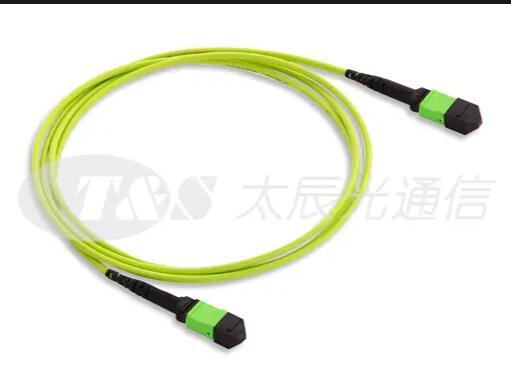
0 notes